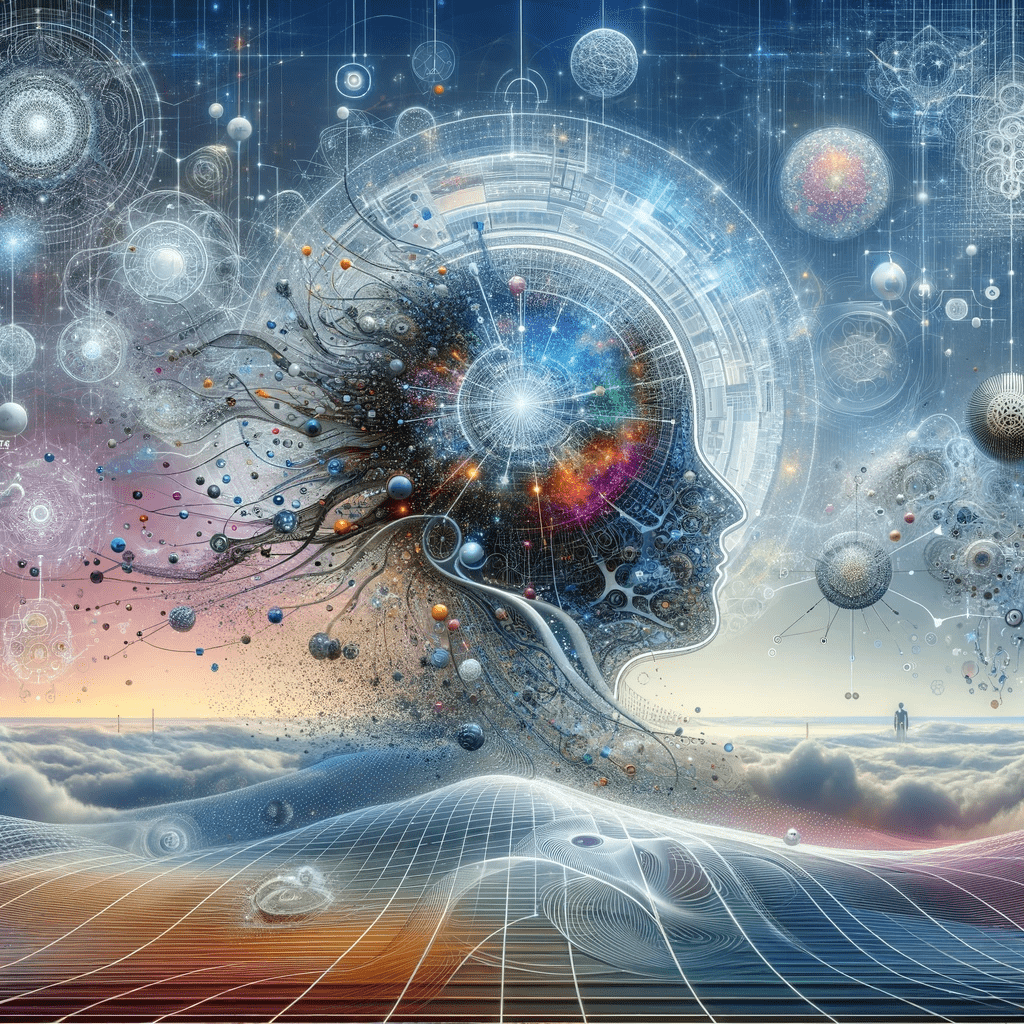The Singularity is Near: When Humans Transcend Biology

“The Singularity is Near: When Humans Transcend Biology” is a landmark book written by futurist, inventor, and author Ray Kurzweil in 2005. The book discusses the future of human civilization, particularly focusing on the potential impact of exponential growth in technology, such as artificial intelligence, biotechnology, and nanotechnology. Kurzweil predicts that this rapid technological advancement will lead to a transformative event in human history, known as the Singularity. Below are the key points and claims made in the book:
- Law of Accelerating Returns: Kurzweil introduces the concept of the “Law of Accelerating Returns,” which posits that the rate of technological progress increases exponentially over time. This principle is based on the observation that technological advancements build on previous discoveries, leading to faster and more efficient development.
- Computational Growth: Kurzweil emphasizes the exponential growth in computational power, citing Moore’s Law as an example. He suggests that this trend will continue, enabling increasingly powerful and sophisticated machines capable of tasks that were once thought to be exclusively human.
- Artificial Intelligence: The author predicts that artificial intelligence will eventually surpass human intelligence, leading to the development of machines that can autonomously improve their own capabilities. This self-improvement cycle will result in rapid progress and the potential for machines to solve complex problems that are currently beyond human comprehension.
- Brain-Computer Interfaces: Kurzweil envisions the development of brain-computer interfaces that will allow humans to directly connect their minds to machines. This breakthrough would enable seamless communication between humans and AI, as well as the ability to enhance our cognitive capabilities through augmentation.
- Human Life Extension: The author believes that advances in biotechnology and nanotechnology will extend human lifespans significantly. This may include genetic manipulation, organ replacement, and cellular repair mechanisms that could reverse or halt the aging process.
- Mind Uploading: Kurzweil posits that we may eventually be able to “upload” our minds to digital platforms, effectively achieving digital immortality. By transferring our consciousness to a non-biological medium, we could transcend the limitations of our physical bodies.
- Ethical Considerations: The book also addresses the ethical implications of these advancements, raising questions about the consequences of merging humans with machines and the potential societal impact of widespread life extension.
- Predictions and Timeline: Kurzweil predicts that the Singularity will occur around 2045, with several milestones along the way, such as achieving human-level AI and widespread integration of brain-computer interfaces.
Important people mentioned in the book include:
- Ray Kurzweil himself, as the author and primary visionary behind the Singularity concept.
- Vernor Vinge, a computer scientist and science fiction author who first proposed the idea of the technological Singularity.
- Marvin Minsky, a pioneering cognitive scientist and AI researcher who inspired Kurzweil’s work on artificial intelligence.
- Eric Drexler, a nanotechnology expert and author of “Engines of Creation,” which discusses the potential of molecular manufacturing.
- Hans Moravec, a roboticist and AI researcher who developed ideas related to mind uploading and the future of robotics.
There have been several books written in response to or building upon “The Singularity is Near.” Some of these include:
- “The Singularity is Further Than it Appears” by Amara D. Angelica: This book critiques Kurzweil’s timeline and predictions, arguing that the Singularity may be further away than he suggests. The author explores alternative perspectives on the future of technology and its implications for society.
- “Our Final Invention: Artificial Intelligence and the End of the Human Era” by James Barrat: This book provides a cautionary view of the development of artificial intelligence, arguing that uncontrolled AI could pose an existential threat to humanity. Barrat explores potential scenarios in which AI could spiral out of control and calls for more research and regulation to ensure a safe and beneficial future.
- “The Age of Spiritual Machines: When Computers Exceed Human Intelligence” by Ray Kurzweil: In this earlier work, Kurzweil discusses the implications of computers surpassing human intelligence, predicting that machines will become conscious and acquire spiritual experiences. The book explores the ethical and philosophical questions arising from the merging of humans and machines.
- “The Lights in the Tunnel: Automation, Accelerating Technology, and the Economy of the Future” by Martin Ford: Ford’s book focuses on the economic impact of accelerating technology, particularly the displacement of human labor by automation and AI. He argues that this transition could lead to mass unemployment and social unrest, and explores potential solutions such as universal basic income.
- “The Transhumanist Wager” by Zoltan Istvan: This novel explores a fictional world where transhumanism has become a powerful social and political force, with the protagonist seeking to achieve immortality through advanced technology. The story raises questions about the ethical and philosophical implications of radical life extension and the pursuit of technological transcendence.
“The Singularity is Near: When Humans Transcend Biology” presents a bold and provocative vision of the future in which humanity experiences profound and transformative changes due to exponential advancements in technology.


